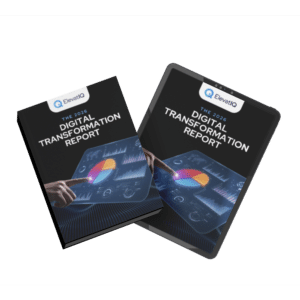Download The Ultimate Comparison Guide
Microsoft Dynamics CRM vs SAP C/4 HANA
Trying to decide whether Microsoft Dynamics CRM vs SAP C/4 HANA is the right choice for your organization? Need a straightforward comparison across essential evaluation criteria? Curious about their strengths, limitations, and future potential? You’re in the right place.
This research brief is fully independent, with no input from any CRM vendor. It delivers clear, practical insights in just over 11 pages.
First, it compares both platforms side by side. You’ll see where each one excels, where they fall short, and which types of businesses they fit best.
Then, the brief dives deeper. It explores each platform’s strengths, limitations, and ideal use cases. It also shows how they fit into the larger CRM ecosystem.
Our insights come from continuous market tracking. This includes user feedback, expert interviews, industry events, proprietary data, vendor briefings, and online communities.
Whether you’re leading a digital transformation, planning a CRM investment, or simply growing your knowledge, this guide will help you make informed, confident decisions.
Questions this report will answer:
What types of organizations are best suited for Microsoft Dynamics CRM?
How do Microsoft Dynamics CRM vs SAP C/4 HANA customer bases compare?
Why might smaller businesses hesitate to adopt Microsoft Dynamics CRM?
What role do third-party add-ons play in the Microsoft Dynamics CRM ecosystem?
Which are the main factors to consider when choosing Microsoft Dynamics CRM vs SAP C/4 HANA?
What makes SAP C/4HANA a strong choice for regulated industries?
How does the integration of SAP C/4HANA with the broader SAP ecosystem benefit customers?
In what ways does Microsoft Dynamics CRM extend beyond core CRM capabilities?
What is a noted strength of Microsoft Dynamics CRM vs SAP C/4 HANA?
What are the potential downsides of SAP C/4HANA’s reliance on legacy technology?
How does the availability of specialized consultants affect SAP C/4HANA projects?
This is Our
Case Study
A brief walkthrough of a recent customer who went through the process of developing the strategy to transform their current eCommerce operations to include a buy-online-and-pick-up-in-store and buy-in-store-ship-to-home business model.

Problem
A leading fashion retailer with more than 30 stores throughout the United States was struggling with the customer experience and accommodation of business models such as buy-online-pick-up-in-store due to disconnected eCommerce and fulfillment systems. They needed omnichannel experience that could transform their experience and help them compete with their larger peers.
Solution
They hired ElevatIQ to assess their as-is and to-be state and come up with the strategy to enable the needed experience. Through the series of workshops and secondary research of their data, ElevatIQ formulated a strategy with the changes in business processes, information architecture, and systems.
Outcome
The strategy resulted in a clear alignment of their executive teams with a refined understanding of their business processes and operations. The strategy also resulted in a clear understanding of the investments and solutions required to implement the strategy.


